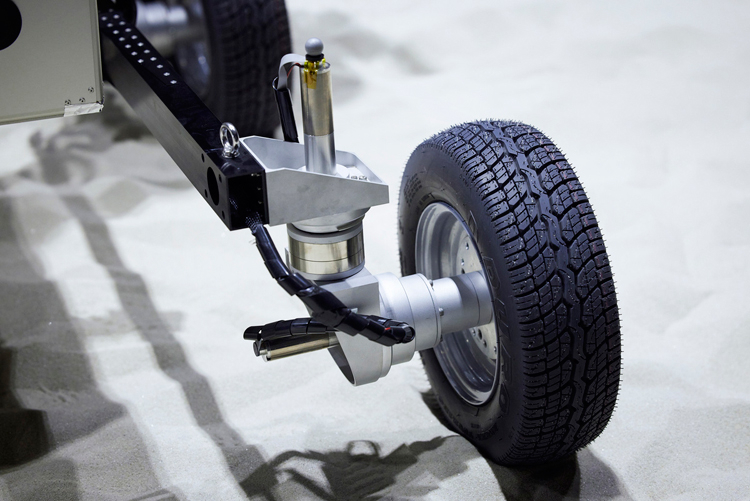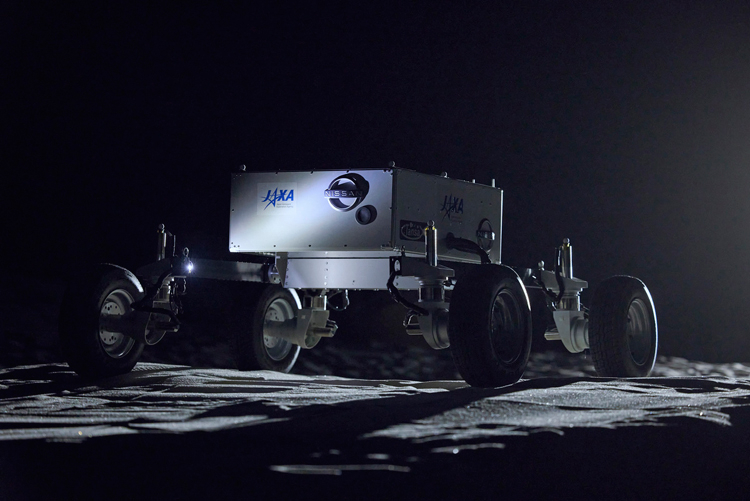Nissan Motor demonstrated a prototype automatic rover for navigating the lunar surface. The device was developed in conjunction with the Japan Aerospace Exploration Agency (JAXA).
Image source: Nissan
To create the rover, Nissan used the experience gained during the development of electric vehicles like the LEAF and Ariya. This includes, in particular, engine controls and e-4ORCE all-wheel drive technology.
It is observed that the lunar rover must be able to navigate on dusty, rocky and irregular surfaces, maintaining energy efficiency. Driving on dusty ground is challenging because the wheels can spin and burrow. The e-4ORCE system was designed exactly to solve these problems.

The rover prototype shown is a four-wheeled vehicle. The E-4ORCE technology makes it possible to precisely steer each wheel independently of the other. A dedicated traction control system while driving minimizes slippage and ensures efficient movement on a variety of surfaces. As a result, the lunar rover’s steering performance in difficult terrain is improved.

“JAXA is committed to applying research results to future space exploration. We partner with companies, universities and research institutes on viable projects with the potential for commercialization and innovation. By conducting research with Nissan, a company with experience in electric vehicles, we hope to apply our findings to the development of high-performance lunar vehicles,” said the JAXA Space Exploration Innovation Center.
–


